- What is Lobularia
- Cultivation of Lobularia
- 1. Choosing the right location
- 2. Soil preparation
- 3. Planting
- 4. Watering
- 5. Fertilizing
- 6. Pruning
- 7. Pest and disease control
- 8. Winter care
- Care for Lobularia Plants
- Light:
- Watering:
- Soil:
- Fertilizer:
- Deadheading:
- Pests and Diseases:
- Winter Care:
- Types of Lobularia
- Varieties of Lobularia
- 1. Royal Carpet
- 2. Wonderland Series
- 3. Easter Bonnet
- 4. Snow Crystals
- 5. Oriental Nights
- 6. Rosie O’Day
- Benefits of Growing Lobularia
- 1. Attractive flowers
- 2. Low maintenance
- 3. Attracts beneficial insects
- 4. Ground cover
- 5. Versatility
- 6. Long blooming period
- Questions and Answers:
- How do I cultivate lobularia?
- What are the types and varieties of lobularia?
- How do I care for lobularia?
- Can lobularia be grown in containers?
- How long does it take for lobularia to bloom?
- What are the benefits of planting lobularia?
- Videos: How to Grow Alyssum from Seed | An Easy Planting Guide
Lobularia, also known as sweet alyssum, is a versatile and charming flowering plant that adds beauty and fragrance to gardens and landscapes. With its delicate clusters of small, fragrant flowers, lobularia is a popular choice for borders, containers, and hanging baskets.
This comprehensive guide will provide you with all the information you need to successfully cultivate and care for lobularia. From the different types and varieties available to the optimal growing conditions and maintenance tips, this guide will help you create a stunning display of lobularia in your garden.
There are several types of lobularia to choose from, including annual and perennial varieties. Annual lobularia, such as Lobularia maritima, are popular for their profusion of blooms and ability to withstand hot and dry conditions. Perennial lobularia, such as Lobularia hybrid, offer long-lasting color and are ideal for adding year-round interest to your garden.
When it comes to cultivation and care, lobularia is a relatively easy plant to grow. It prefers full sun to partial shade and well-draining soil. Regular watering is important, especially during dry spells. Deadheading spent flowers will encourage continuous blooming, while occasional pruning will help maintain a compact and attractive shape.
So whether you’re a seasoned gardener or a beginner, this comprehensive guide to lobularia will provide you with the knowledge and confidence to successfully cultivate and care for this beautiful flowering plant. Get ready to enjoy the beauty and fragrance of lobularia in your garden!
What is Lobularia
Lobularia is a flowering plant native to the Mediterranean region. It belongs to the family Brassicaceae and genus Lobularia. Lobularia is commonly known as sweet alyssum or sweet Alison.
Lobularia is a low-growing annual or perennial plant that is widely cultivated for its fragrant clusters of tiny, white or pink flowers. The flowers are small, about 6 mm in diameter, and have a sweet, honey-like scent. The plant has a spreading habit and can grow up to 6-12 inches in height.
Sweet alyssum is an attractive addition to gardens, borders, and containers due to its delicate flowers and pleasant fragrance. It is also a popular choice for hanging baskets and window boxes.
Lobularia maritima is the most common species of sweet alyssum and is widely cultivated as an annual plant. There are several cultivars and varieties available, including dwarf varieties that are perfect for edging and ground cover.
Lobularia is known for its ease of cultivation and low maintenance requirements. It prefers full sun to partial shade and well-drained soil. It is drought-tolerant and can withstand heat and dry conditions. The plant blooms from spring to fall and attracts bees, butterflies, and other beneficial insects.
In addition to its ornamental value, Lobularia is also used in the perfume industry for its sweet scent. The flowers are edible and can be used to garnish salads or desserts. The plant has medicinal properties and is believed to have diuretic and anti-inflammatory effects.
- Common name: Sweet alyssum, sweet Alison
- Scientific name: Lobularia
- Family: Brassicaceae
- Genus: Lobularia
- Origin: Mediterranean region
- Height: 6-12 inches
- Flower color: White, pink
- Blooming period: Spring to fall
- Uses: Ornamental, fragrance, culinary, medicinal
Overall, Lobularia is a versatile and delightful plant with a range of uses and benefits. Whether you want to enhance your garden with its sweet fragrance or add a touch of elegance to your culinary creations, Lobularia is an excellent choice.
Cultivation of Lobularia
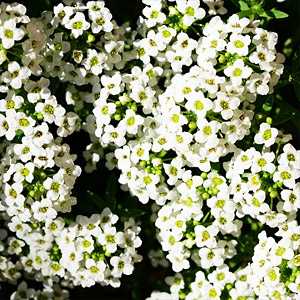
Lobularia is a beautiful flowering plant that is relatively easy to cultivate. Here are some tips and guidelines for successfully growing Lobularia:
1. Choosing the right location
Lobularia prefers a sunny location with well-drained soil. It can tolerate some shade, but it will produce more flowers and have a more compact growth habit in full sun.
2. Soil preparation
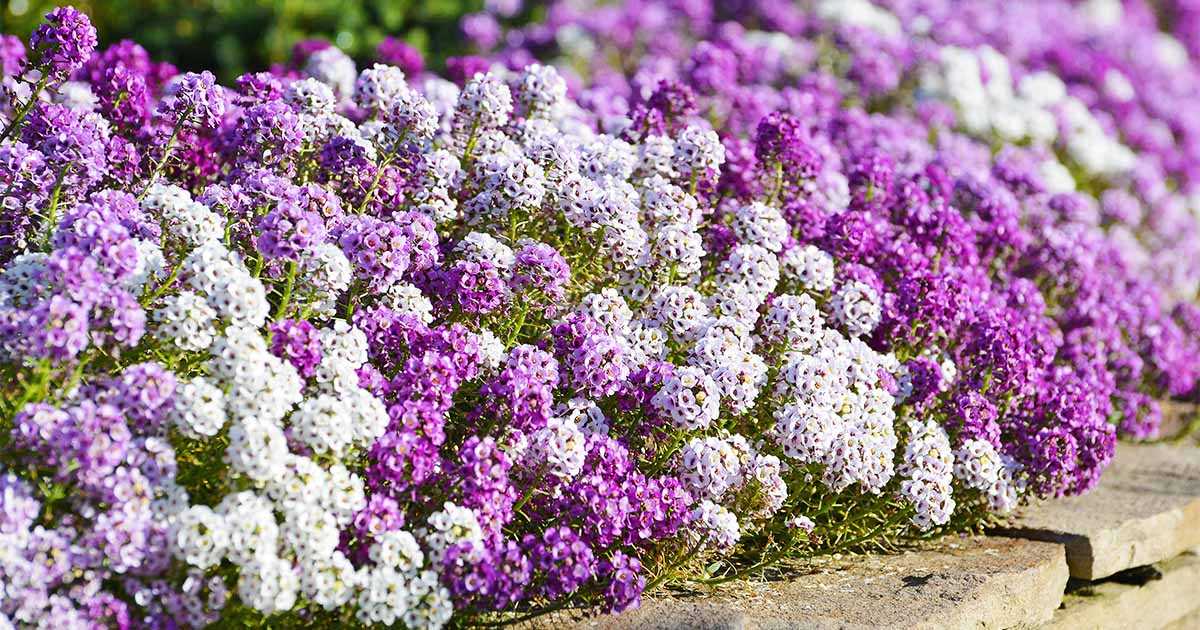
Prepare the soil by loosening it with a garden fork and removing any weeds or debris. Lobularia is not too particular about soil type and can tolerate a range of soil conditions.
3. Planting
When planting Lobularia, make sure to space the plants about 6-8 inches apart to allow for proper airflow and growth. Dig a hole that is slightly larger than the root ball of the plant and place the plant in the hole, ensuring that it is level with the surrounding soil.
4. Watering
Lobularia has moderate water needs and can tolerate short periods of drought. Water the plants regularly, about once or twice a week, especially during dry spells or hot weather. Avoid overwatering, as this can lead to root rot.
5. Fertilizing
Apply a balanced, slow-release fertilizer when planting Lobularia, and then feed the plants every 4-6 weeks with a water-soluble fertilizer. This will promote healthy growth and abundant flowering.
6. Pruning
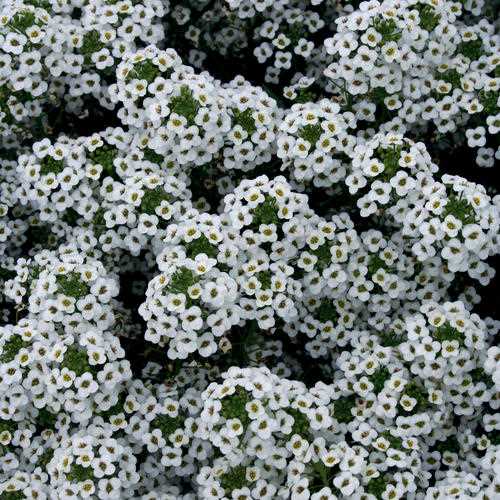
Deadhead Lobularia regularly to remove spent flowers and encourage continuous blooming. This will also help prevent the plant from becoming leggy or bushy. Trim back any straggly or overgrown branches to maintain a compact shape.
7. Pest and disease control
Lobularia is generally a disease-resistant plant, but it can be susceptible to aphids, slugs, and snails. Check your plants regularly for signs of pests and take appropriate measures to control them. Use organic pest control methods whenever possible.
8. Winter care
Lobularia is considered an annual in most climates, but it can be grown as a perennial in warmer regions. In colder climates, protect the plants from frost by covering them with mulch or bring them indoors during the winter months.
Following these cultivation tips will help you grow healthy and vibrant Lobularia plants that will beautify your garden or containers with their charming flowers and sweet fragrance.
Care for Lobularia Plants
Lobularia plants, also known as sweet alyssum, are low-growing, fragrant flowering plants that are easy to care for. Here are some tips for keeping your lobularia plants healthy and thriving:
Light:
Lobularia plants prefer full sun to part shade. They will tolerate some shade, but they will not flower as prolifically in shady areas. It is best to place them in a location that receives at least 6 hours of direct sunlight a day.
Watering:
Water your lobularia plants regularly, keeping the soil evenly moist but not waterlogged. They are not drought-tolerant, so be sure to water them whenever the top inch of soil feels dry to the touch. Avoid overhead watering, as wet leaves can lead to fungal diseases.
Soil:
Lobularia plants prefer well-draining soil that is rich in organic matter. Amend heavy clay soil with compost or other organic matter to improve drainage. They can tolerate a wide range of soil pH levels but prefer a slightly acidic to neutral pH around 6.0 to 7.0.
Fertilizer:
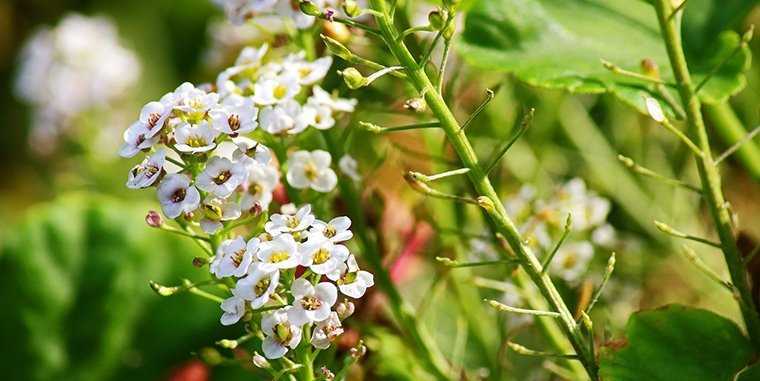
Lobularia plants are not heavy feeders, but you can fertilize them lightly with a balanced fertilizer once a month during the growing season to promote healthy growth and abundant flowering. Avoid over-fertilizing, as this can lead to leggy growth and fewer blooms.
Deadheading:
To encourage continuous flowering, remove spent flowers by pinching or cutting them off. This will prevent the plant from putting energy into seed production and instead focus on producing more flowers.
Pests and Diseases:
Lobularia plants are relatively pest and disease resistant. However, they can be susceptible to aphids and powdery mildew in humid conditions. Keep an eye out for any signs of infestation or disease and treat them promptly with appropriate organic or chemical controls.
Winter Care:
Lobularia plants are often grown as annuals, but they are actually perennials in USDA hardiness zones 9 to 11. In colder regions, they may not survive the winter. If you want to overwinter your lobularia plants, you can take cuttings in the fall and grow them indoors as houseplants or in a greenhouse.
Following these care tips will help you cultivate healthy and beautiful lobularia plants that will provide a lovely fragrance and stunning display of flowers.
Types of Lobularia
Lobularia, commonly known as sweet alyssum, is a versatile plant with several different types and varieties. Here are some of the most popular types of Lobularia:
- Compact Lobularia: This type of Lobularia has a compact growth habit, making it perfect for small gardens or containers. It typically grows up to 6 inches tall and produces abundant blooms.
- Tall Lobularia: As the name suggests, this type of Lobularia can grow taller than other varieties, reaching heights of up to 12 inches. It has a more upright growth habit and is often used as a border plant or in larger flower beds.
- Dwarf Lobularia: This variety of Lobularia is smaller in size, with a maximum height of 4 inches. It is often used as a ground cover or in rock gardens.
In addition to these main types, there are also various hybrid varieties of Lobularia available, each with its own unique characteristics. These hybrids may have different flower colors, growth habits, or fragrance levels, providing gardeners with a wide range of options to choose from.
Some popular hybrid varieties of Lobularia include:
- Carpet of Snow: This variety features pure white flowers and forms a dense carpet of blooms. It is known for its strong fragrance and is often used in cottage gardens or as an edging plant.
- Royal Carpet: This hybrid has deep purple flowers that contrast beautifully with its silvery-green foliage. It is a more compact variety, making it suitable for containers or smaller garden spaces.
- Wonderland: This Lobularia variety has pink, purple, or lavender flowers that create a vibrant display. It is a relatively taller variety and can be used as a filler plant or in mixed borders.
| Type | Description |
|---|---|
| Compact Lobularia | Small and compact growth habit, perfect for small gardens or containers |
| Tall Lobularia | Upright growth habit, suitable for borders or larger flower beds |
| Dwarf Lobularia | Small size, often used as ground cover or in rock gardens |
| Carpet of Snow | Pure white flowers, strong fragrance, used in cottage gardens or as an edging plant |
| Royal Carpet | Deep purple flowers, silvery-green foliage, compact variety, suitable for containers or smaller gardens |
| Wonderland | Pink, purple, or lavender flowers, vibrant display, taller variety, used as a filler plant or in mixed borders |
These are just a few examples of the types and varieties of Lobularia available. With its beautiful blooms and pleasant fragrance, Lobularia is a popular choice for both beginner and experienced gardeners.
Varieties of Lobularia
Lobularia, also known as sweet alyssum, is a versatile annual plant that comes in various varieties. These varieties differ in terms of flower colors, growth habits, and sizes. Here are some popular varieties of Lobularia:
1. Royal Carpet
Flower Color: Deep purple
Growth Habit: Compact and spreading
Size: Grows up to 4 inches tall
2. Wonderland Series
Flower Colors: White, pink, and lavender
Growth Habit: Compact and mounding
Size: Grows up to 6 inches tall
3. Easter Bonnet
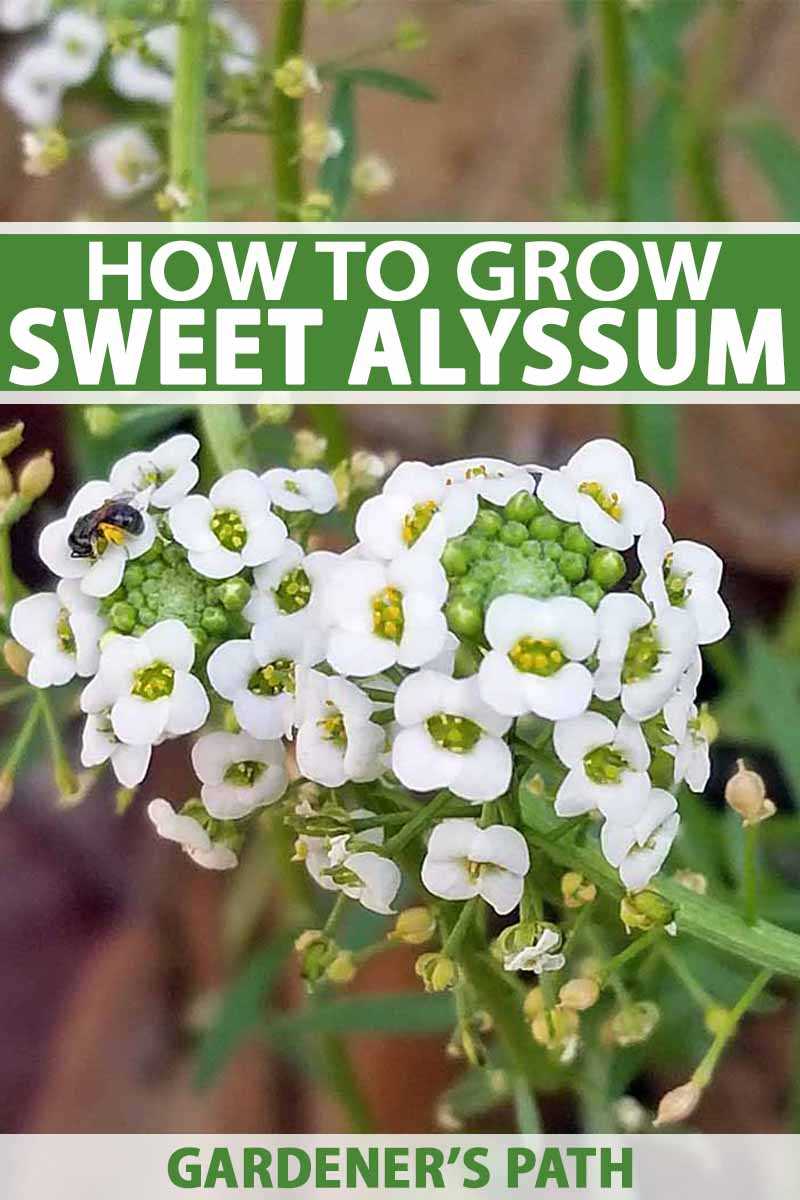
Flower Colors: White, lavender, and pink
Growth Habit: Compact and trailing
Size: Grows up to 8 inches tall
4. Snow Crystals
Flower Color: White
Growth Habit: Compact and spreading
Size: Grows up to 4 inches tall
5. Oriental Nights
Flower Color: Deep purple
Growth Habit: Compact and mounding
Size: Grows up to 6 inches tall
6. Rosie O’Day
Flower Color: Pink
Growth Habit: Compact and trailing
Size: Grows up to 8 inches tall
These are just a few examples of the many Lobularia varieties available. Each variety offers its own unique beauty and characteristics, making them suitable for different garden designs and preferences.
| Variety | Flower Color | Growth Habit | Size |
|---|---|---|---|
| Royal Carpet | Deep purple | Compact and spreading | 4 inches tall |
| Wonderland Series | White, pink, and lavender | Compact and mounding | 6 inches tall |
| Easter Bonnet | White, lavender, and pink | Compact and trailing | 8 inches tall |
| Snow Crystals | White | Compact and spreading | 4 inches tall |
| Oriental Nights | Deep purple | Compact and mounding | 6 inches tall |
| Rosie O’Day | Pink | Compact and trailing | 8 inches tall |
By choosing different Lobularia varieties, gardeners can create stunning displays of contrasting colors and textures in their flower beds, containers, or hanging baskets.
Benefits of Growing Lobularia
Lobularia, commonly known as sweet alyssum, is a popular flowering plant that offers a range of benefits for gardeners. Whether you are an experienced gardener or a beginner, here are some reasons why you should consider growing lobularia:
1. Attractive flowers
Lobularia produces clusters of tiny, delicate flowers that come in various colors, including white, pink, purple, and lavender. These flowers are not only visually appealing but also emit a sweet fragrance, making them a beautiful addition to any garden.
2. Low maintenance
Lobularia is a low-maintenance plant that requires minimal care. It can tolerate a wide range of soil conditions and can thrive in both full sun and partial shade. Additionally, lobularia is drought-tolerant, making it a suitable choice for gardens with limited water availability.
3. Attracts beneficial insects
Lobularia is known for its ability to attract beneficial insects, such as bees and butterflies, to the garden. These insects play a crucial role in pollination, helping to improve the overall health and productivity of your garden.
4. Ground cover
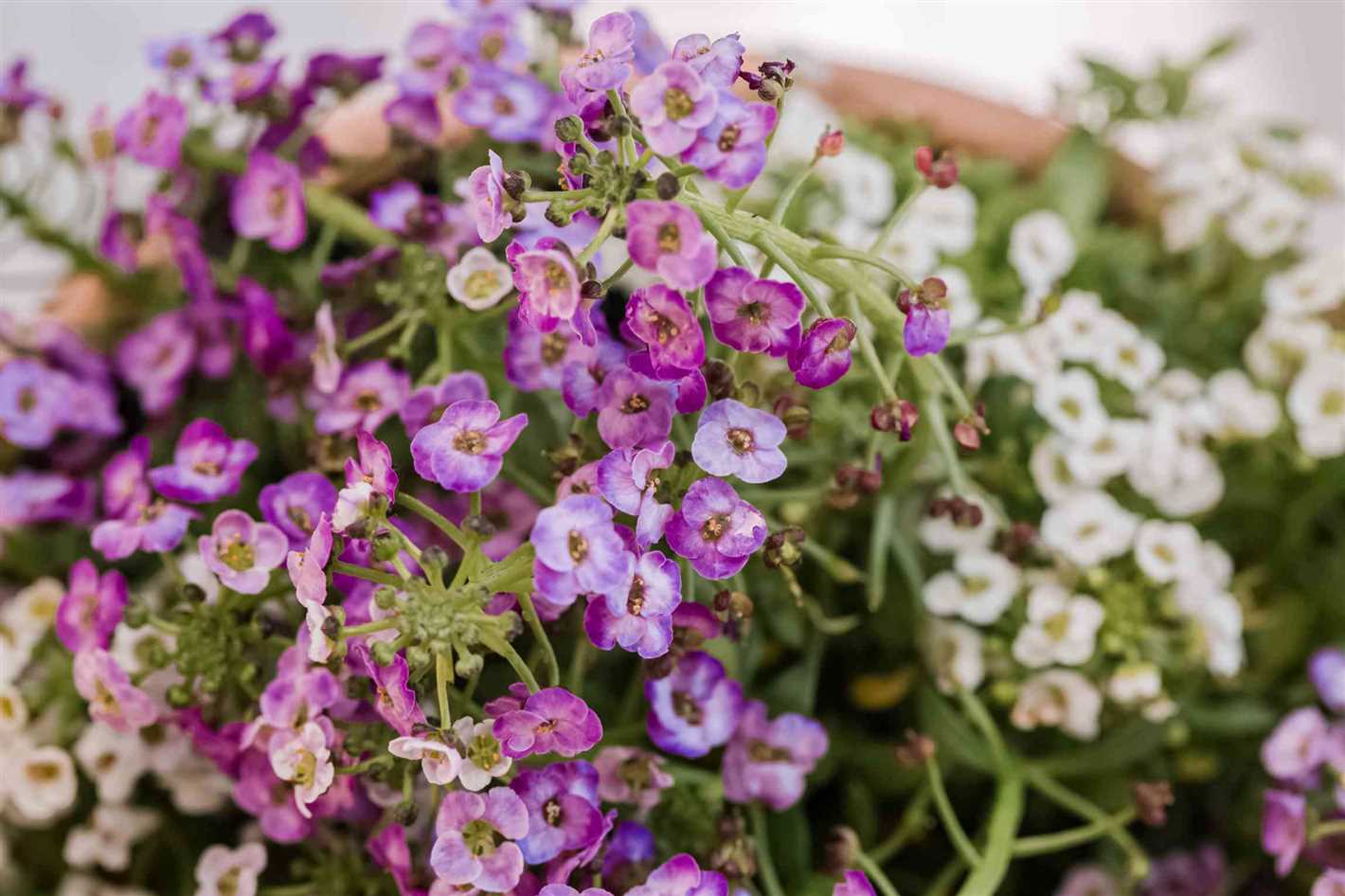
With its spreading habit and dense growth, lobularia can be used as an effective ground cover. It can help to suppress weed growth and prevent soil erosion, making it a practical choice for gardens and landscapes.
5. Versatility
Lobularia can be grown in various settings, including flower beds, containers, hanging baskets, and borders. Its compact size and trailing habit make it a versatile plant that can be used to add color and texture to different areas of your garden.
6. Long blooming period
Lobularia has a long blooming period, which means you can enjoy its beautiful flowers for an extended period of time. This makes lobularia a valuable addition to any garden, providing continuous color and interest throughout the growing season.
| Variety | Color | Height |
|---|---|---|
| Snow Princess | White | 6-12 inches |
| Lilac Stream | Lilac | 6-8 inches |
| Purple Stream | Purple | 6-8 inches |
Overall, growing lobularia can add beauty, fragrance, and a host of benefits to your garden. Whether you are looking for a low-maintenance plant, a ground cover, or a way to attract beneficial insects, lobularia is a versatile choice that can enhance any garden or landscape.
Questions and Answers:
How do I cultivate lobularia?
Lobularia is a low-maintenance plant that can be easily cultivated. It prefers well-draining soil and full sun. Sow the seeds directly in the garden after the last frost date, or you can start them indoors six to eight weeks before transplanting them outside. Water regularly, but be careful not to overwater as it can lead to root rot. Fertilize once a month with a balanced fertilizer. Deadhead regularly to encourage continuous blooming.
What are the types and varieties of lobularia?
There are several types and varieties of lobularia available. Some popular varieties include “Snow Princess,” which has double white flowers, “Royal Carpet,” which has deep purple flowers, and “Easter Bonnet Lilac,” which has pale lavender flowers. There are also trailing varieties, such as “Wonderland Purple” and “Stream Pink,” which are perfect for hanging baskets and containers.
How do I care for lobularia?
Lobularia is a low-maintenance plant that requires minimal care. Water regularly, keeping the soil evenly moist but not waterlogged. Deadhead spent blooms regularly to encourage continuous flowering. Fertilize with a balanced fertilizer once a month to promote healthy growth. Lobularia is generally disease-resistant, but keep an eye out for pests such as aphids or whiteflies and treat accordingly.
Can lobularia be grown in containers?
Yes, lobularia can be grown in containers. In fact, there are trailing varieties such as “Wonderland Purple” and “Stream Pink” that are specifically suited for hanging baskets and containers. Choose a container with good drainage, fill it with well-draining potting soil, and sow the lobularia seeds directly in the container. Place the container in a sunny location and water regularly. Deadhead spent blooms to encourage continuous flowering.
How long does it take for lobularia to bloom?
Lobularia typically blooms within 6 to 8 weeks from sowing the seeds. However, this can vary depending on growing conditions and the specific variety of lobularia. Make sure to provide the plant with full sun and regular watering to help encourage blooming. Deadheading spent blooms can also help promote continuous flowering.
What are the benefits of planting lobularia?
Planting lobularia offers several benefits. Firstly, lobularia is very easy to grow and requires minimal care, making it a great choice for beginners or busy gardeners. It also attracts butterflies and other beneficial insects, helping to create a more biodiverse and healthy garden ecosystem. Additionally, lobularia is a compact plant that works well in borders, containers, or hanging baskets, adding beauty to any garden or patio space.







